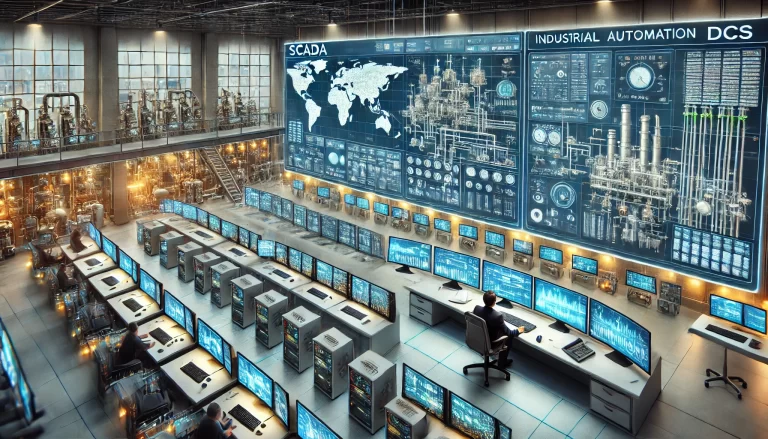- DCS: Distributed Control System – A control system distributed across multiple control devices or systems.
- PLC: Programmable Logic Controller – A ruggedized computer used for automation of industrial processes.
- HMI: Human Machine Interface – The user interface that allows humans to interact with machines.
- SCADA: Supervisory Control and Data Acquisition – A system used to monitor and control industrial processes.
- I/O: Input/Output – The communication between an information processing system and the external world.
- PID: Proportional-Integral-Derivative – A control loop feedback mechanism widely used in industrial control systems.
- RTU: Remote Terminal Unit – A microprocessor-controlled device used to interface with field devices.
- CPU: Central Processing Unit – The primary component of a computer that performs most of the processing inside a system.
- RAM: Random Access Memory – A type of computer memory that can be accessed randomly.
- ROM: Read-Only Memory – A type of non-volatile memory used in computers and other devices.
- LAN: Local Area Network – A network that connects computers within a limited area such as a building or campus.
- WAN: Wide Area Network – A telecommunications network that extends over a large geographical area.
- TCP/IP: Transmission Control Protocol/Internet Protocol – A set of communication protocols used for interconnecting network devices on the internet.
- MODBUS: A communication protocol used for transmitting data between electronic devices.
- OPC: OLE for Process Control – A standard for interoperability between industrial devices and software applications.
- API: Application Programming Interface – A set of routines, protocols, and tools for building software applications.
- GUI: Graphical User Interface – A user interface that includes graphical elements, such as icons and buttons.
- SQL: Structured Query Language – A standardized language used to manage databases.
- FTP: File Transfer Protocol – A standard network protocol used to transfer files between computers.
- HTTP: Hypertext Transfer Protocol – A protocol used for transmitting hypertext over the internet.
- HTTPS: Hypertext Transfer Protocol Secure – A secure version of HTTP, used for encrypted communication over the internet.
- VPN: Virtual Private Network – A technology that creates a safe and encrypted connection over a less secure network, like the internet.
- DNS: Domain Name System – A hierarchical naming system used to identify devices on the internet.
- DHCP: Dynamic Host Configuration Protocol – A network management protocol used to automatically assign IP addresses to devices.
- SNMP: Simple Network Management Protocol – A protocol used for managing devices in a network.

Additional Relevant Abbreviations:
- BACnet: Building Automation and Control Network – A communication protocol for building automation systems.
- RTOS: Real-Time Operating System – An operating system that guarantees a certain capability within a specified time constraint.
- IoT: Internet of Things – A network of interconnected devices that communicate and exchange data.
- Ethernet/IP: Ethernet Industrial Protocol – A network protocol used for industrial automation that operates over Ethernet.
- EtherCAT: Ethernet for Control Automation Technology – A high-performance, Ethernet-based fieldbus system.
- M2M: Machine to Machine – Direct communication between devices, often without human intervention.
- NMS: Network Management System – A system used to manage and monitor network devices and traffic.
- VFD: Variable Frequency Drive – A type of motor controller that adjusts the speed of an electric motor.
- ACR: Automatic Control Relay – A relay used in automatic control systems to switch devices based on control signals.
- DCS/PLC Hybrid: A system that integrates both DCS and PLC features for enhanced control and automation capabilities.

